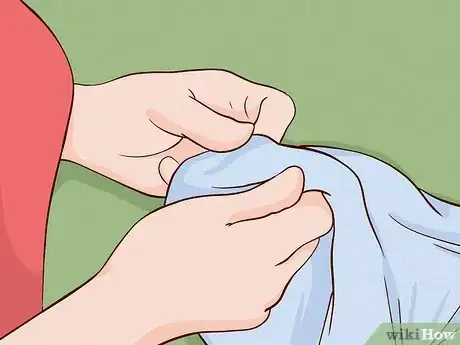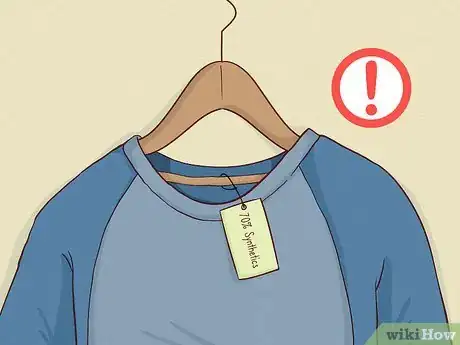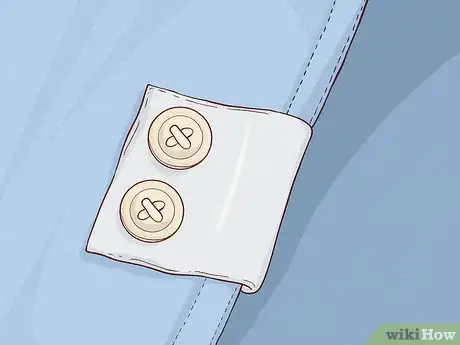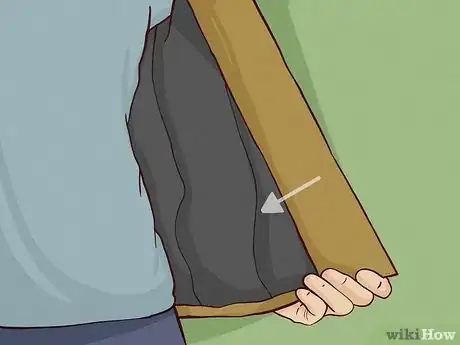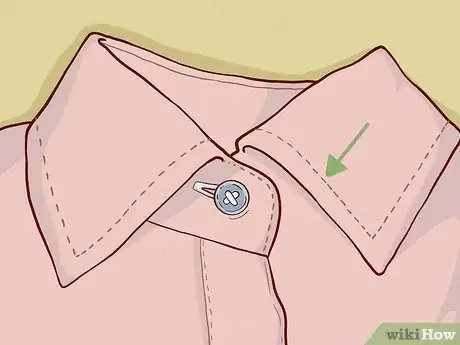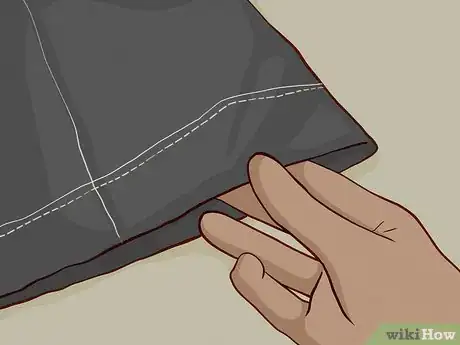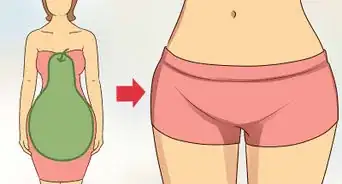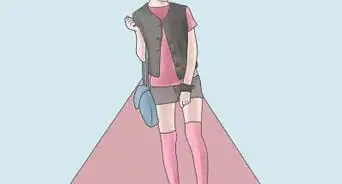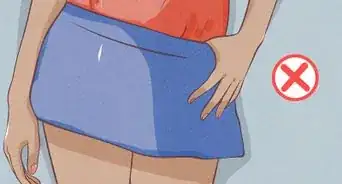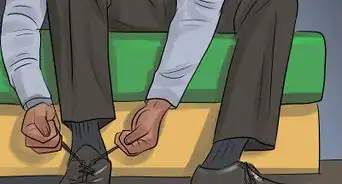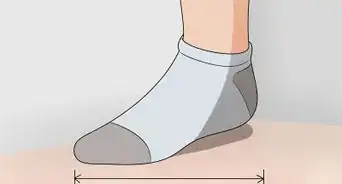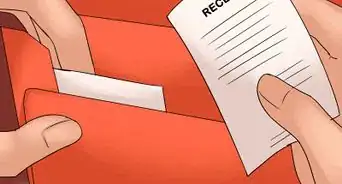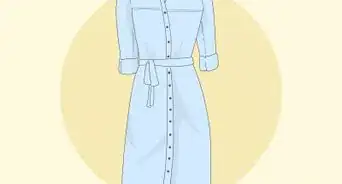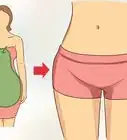This article was co-authored by Stephanie Fajardo. Stephanie Fajardo is a Personal Stylist based in Portland, Oregon. Stephanie has over 17 years of styling experience in personal consulting, television, photography, and film shoots. Her work has been featured in Esquire Magazine and Portland Fashion Week.
This article has been viewed 41,057 times.
Shopping for clothes can often be an overwhelming experience. While there are many options to pick from, many clothes are of relatively low quality. Fortunately, though, there are several ways you can better spot high quality clothing. By scrutinizing the material clothing is made of, looking at the workmanship of clothing, and considering the amount of material used, you’ll get a good idea of the garment’s quality.
Steps
Identifying Good Material
-
1Look for a high content of natural fibers. High quality clothes are often made with natural fibers. This is because natural fibers are not only more expensive, but sometimes hold up better over time. Ultimately, the fibers a product is made will tell you a lot about the product itself.
- High quality clothing is often made of wool, cotton, cashmere, and silk.
- Remember that a high content of natural fiber does not necessarily mean a piece of clothing is high quality. You’ll also have to look at the construction of the clothing, feel it to make sure it is soft, and make sure that thread work is secure.
- Natural fiber and synthetic blends are okay, if most of the material is natural. Blended fabric may tend to last long and hold shape a lot better than cloths just made of natural fiber.[1]
-
2Avoid synthetics. While synthetics are touted for being cheaper and more durable than natural fibers, they are the hallmark of cheap clothing. This is because they’re a good indicator that the manufacturer was focused on cost rather than quality. Thus, you should be wary of synthetics and scrutinize them.
- Be careful of polyester fabrics. They’re exceptionally cheap and are probably poorly manufactured.
- Watch out for acrylic. For example, sweaters that are more than 50% acrylic won’t last long.[2]
Advertisement -
3Observe what buttons and zippers are made of. The material of buttons and other accessories can tell you a lot about the quality of a garment. Plastic parts are an indicator that a piece of clothing is cheaply made. Instead, look for:
- Metal zippers.
- Wood or metal buttons.
- Look for robust buttons and other accessories, regardless of the type of material.
Observing the Quantity of Material
-
1Focus on the thickness of the clothing. The heaviness or thickness of a piece of clothing is also a positive indicator that it is high quality. Clothing that is made with generous amounts of material is typically high quality clothing and will be comfortable, maintain its appearance, and last for many years. To test thickness:
- Hold the garment up to the light and see if much light penetrates it.
- Pinch it with your fingers and see how it feels.
- Feel how much it weighs against a similar article of clothing you know is high quality. If it is lighter, it likely has thinner material.[3]
-
2Look for garments that include extra or spare buttons. Depending on style, high end clothing will have no shortage of buttons. In addition, higher end clothing will come with spare buttons you can use to replace lost ones.
- Inspect the clothing and try to locate extra buttons.
- Look to see that buttons are where they should be. For example, collars and the sleeves of arms will have buttons.[4]
-
3Spot garments that have fabric facing included. Facing is the extra material manufactures sew along seams. They are often used around zippers and necklines. If a garment does not have facing or has a little bit of facing, the garment may be low quality.
- Try to see if the manufacture used the same fabric for facing as they used for the rest of the garment. If they did, this speaks to the quality of the fabric.[5]
-
4Pay attention to whether the garment has lining. Lining is the material put in between the inner and outer fabric of jackets and similar pieces of clothing. Unlined jackets or other articles of clothing appear cheap, thin, and won’t be as warm.
- Pinch the fabric lightly and rub your fingers together to see if there is lining present. Pay attention to the thickness of lining – the thicker, the better.
- Try to spot marks of quality that demand the use of extra material such as plackets covering buttons, double darts, or French cuffs.
Looking at Workmanship
-
1Focus on good stitch work. Good stitching work is one of the best indications that a piece of clothing is high quality. If the stitch work is poor, chances are that the item was cheaply made and uses cheap materials. Look for:
- Stitching work with many stitches per inch. Generally, the more the better.
- Extra top stitching.
- Buttons and other pieces that are securely sown to the fabric.
- Hem work that is fully finished. For example, if the hem appears loosely stitched inside or is lacking thread, the clothing is probably low quality.[6]
-
2Look for imperfections. A sizable number of imperfections are a clear sign of poor quality. Ultimately, you should see imperfections as a warning sign of poor workmanship. If the quality is put together poorly, it likely won’t last long. Avoid:
- Missed stiches
- Loose stiches
- Crooked lines or seams
- Fabric patterns that don’t line up with seams[7]
-
3Identify quality brands. One of the easiest ways to identify high quality clothing is to learn about the brands that produce it. This way, all you’ll have to do is see the manufacture’s tag to know an item was made well. Look for:
- Handcrafted garments or garments produced by niche or small-scale producers. If you’re not sure, consult the manufacture’s tag and then look it up on the internet.
- Popular high-quality brands include Levi Strauss & Co., Patagonia, Ralph Lauren, J Crew, Diesel, Pendleton, and others.
- The quality of certain brands may decrease over time, so don’t assume that a brand that was high quality 10 years ago is still high quality.[8]
Expert Q&A
-
QuestionHow do you check the quality of a garment?
 Stephanie FajardoStephanie Fajardo is a Personal Stylist based in Portland, Oregon. Stephanie has over 17 years of styling experience in personal consulting, television, photography, and film shoots. Her work has been featured in Esquire Magazine and Portland Fashion Week.
Stephanie FajardoStephanie Fajardo is a Personal Stylist based in Portland, Oregon. Stephanie has over 17 years of styling experience in personal consulting, television, photography, and film shoots. Her work has been featured in Esquire Magazine and Portland Fashion Week.
Professional Stylist The best ways to test the quality of clothing are touching it and looking at it. Pay attention to the construction of the garment, the tightness of the weave, and whether the material is highly pigmented. With a little practice, you can become a clothing expert!
The best ways to test the quality of clothing are touching it and looking at it. Pay attention to the construction of the garment, the tightness of the weave, and whether the material is highly pigmented. With a little practice, you can become a clothing expert!
References
- ↑ https://www.dailyworth.com/posts/2904-how-to-identify-quality-clothing
- ↑ https://www.dailyworth.com/posts/2904-how-to-identify-quality-clothing
- ↑ https://www.dailyworth.com/posts/2904-how-to-identify-quality-clothing
- ↑ https://www.dailyworth.com/posts/2904-how-to-identify-quality-clothing
- ↑ https://www.dailyworth.com/posts/2904-how-to-identify-quality-clothing
- ↑ https://www.dailyworth.com/posts/2904-how-to-identify-quality-clothing
- ↑ http://www.realmenrealstyle.com/identify-quality-clothing/
- ↑ http://www.ranker.com/list/quality-clothing-brands/werner-brandes
